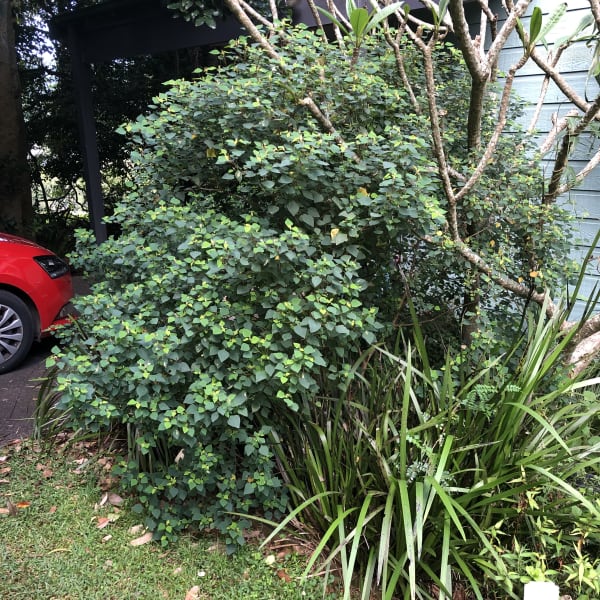The Illawarra is home to a number of locally, regionally or nationally rare plant species. Some of them are classified as being threatened with extinction, like the Illawarra Socketwood (Daphnandra johnsonii) or the local population of Scrub Ironwood (Gossia acmenoides), while others are not (for a range of reasons).
A beautiful small shrub in the latter category is the Small-leaved Bleeding Heart, or Homalanthus stillingiifolius. This small leafy shrub reaches around 1.5m high, though it can be quite wide and spreading, in part due to its habit of suckering.
It is related to the more common and better-known Bleeding Heart (Homalanthus populifolius), and has similar heart-shaped leaves. But Small-leaved Bleeding Heart has (yes, you guessed it) smaller leaves, and (no, you wouldn't guess this) the leaves don't turn red before falling, so the name is something of a misnomer. Still, it's a gorgeous plant.

Although the leaves don't turn spectacular colours before falling, the flowers of Small-leaved Bleeding Heart kind of make up for that. If you zoom in. They're absolutely spectacular little natural wonders. They generally appear in spring, but a second flowering sometimes happens in autumn.
You'd be fairly unlikely to see Small-leaved Bleeding Heart in a natural situation, as it is rare and becoming rarer due to land clearing for various purposes.
It generally occurs in wet sclerophyll (eucalypt) forest, or sometimes in dry rainforest, and generally on rocky soil. Local records are clustered in the south of the region, and include plants in the Dunmore area and at Killalea Regional Park.
I do hope you find it if you go looking.






